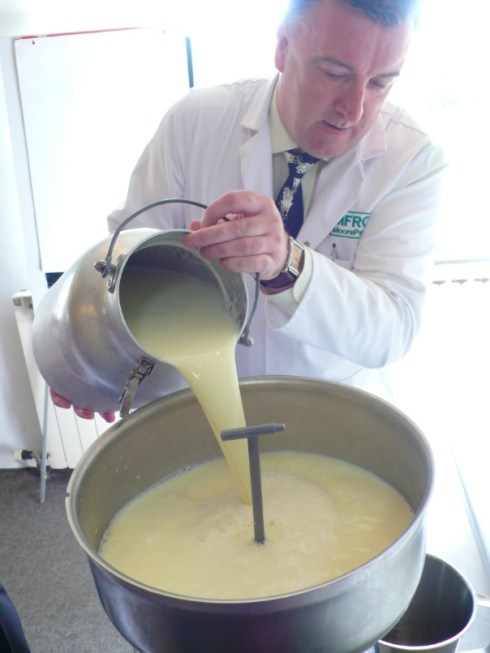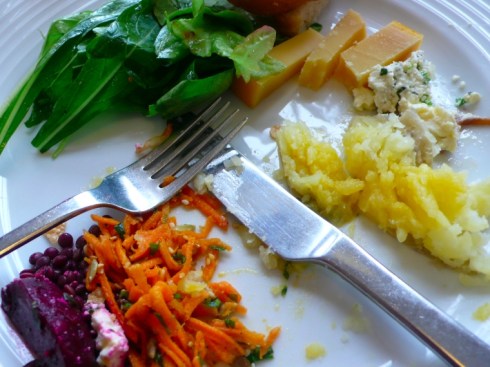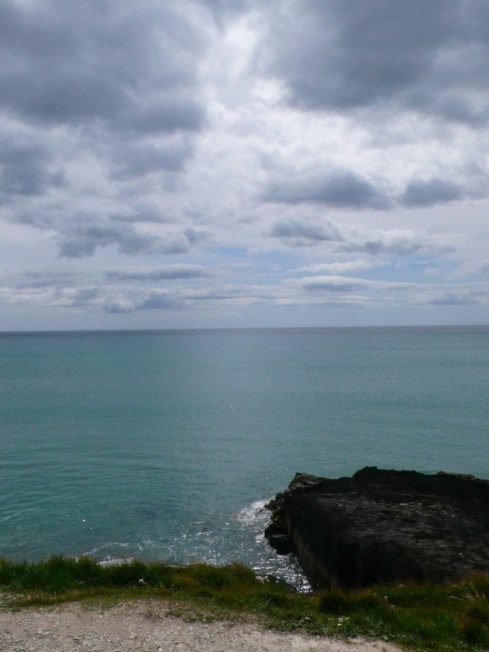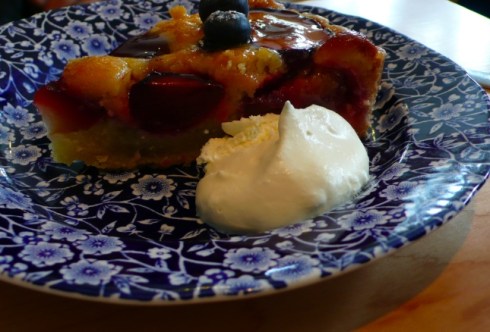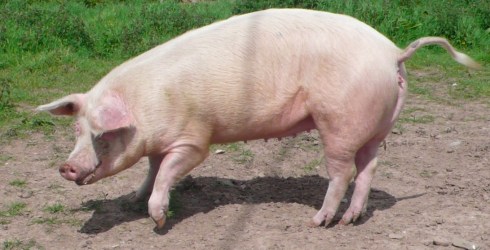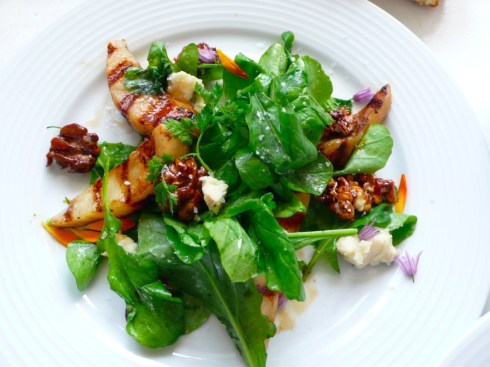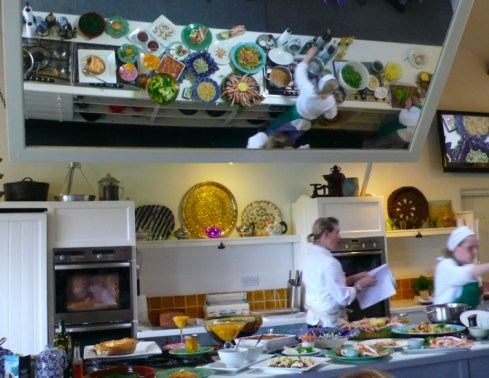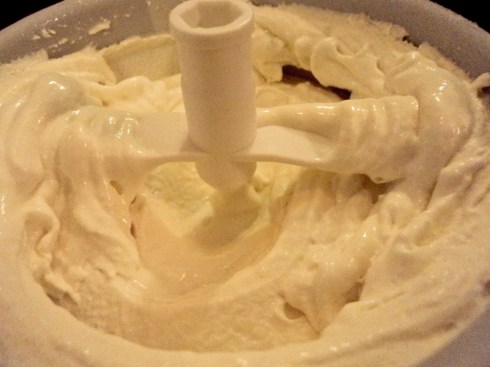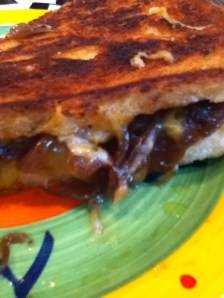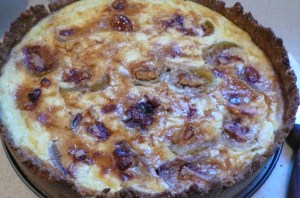What a whirlwind week it has been. So many extraordinary stories and voices, such bliss and peace, laughter and light. When I look back over the posts on this blog, I see the trepidation with which I approached this trip. I knew it would be life changing – and when one comes to that moment in time where all will change, there is a pause, a hesitation. But time is inevitable – it keeps moving forward. And as long as one goes with it, with the flow of experience, with the grace of the universe … change is beautiful. And experience is precious.
So this past week has been intense on a whole variety of levels. We had some wonderful visits from cheese and wine makers, as well as Ballymaloe House’s resident sommelier. We had cooking demonstrations from Darina and Rachel, did our chores, changed our kitchens, and cooked our hearts out. Every day we are learning new techniques. We are being pushed to consider timing and rhythm, presentation and plating. Every day we produce food that we sit down as a group to eat together, and we are truly blessed. And this past weekend, I found myself wandering to the regginbrow was to be seen ringsome on the aquaface. And I returned full of grace.
So here we go. Days 10 – 15 in this magical place they call the Emerald Isle, in a little corner called Ballymaloe.
Day 10 – Blessed are the Cheese Makers and Wine Tasters
Wednesdays are always full on theory – demonstration days. And this past Wednesday, we had a morning of cheese making, and an afternoon of wine tasting.
In the morning, we were introduced to Eddie O-Neill, Dairy Artisan Food Specialist at Teagasc’s Moorepark Research Centre. Eddie is a cheese man pure and simple. He is immersed in cheese making and can easily explain the science of milk – and cheese – in an accessible and yet scientific manner. Eddie was fascinating, enthusiastic, passionate and totally immersed in the magic of turning milk into cheese.
We were given a brief and thorough overview of the different kinds of milk, fat content, and methodologies of treating milk. Eddie showed us how to separate the cream from the milk – and from this process, all else follows! He used the gorgeous raw milk from the Jersey cows at Ballymaloe.
From that point, we were taken on a whirlwind tour of cheesemaking. Eddie and Darina made butter, yoghurt, labne, buttermilk, srikhand, cottage cheese, mel y mato, paneer, ricotta, couer a la creme and a gouda! It was completely overwhelming, and they would never have been able to accomplish so much without the sure, strong preparedness of the fabulous Emer who was working with them. Once you understand the chemical reactions of milk to heat, to enzymes, to agitation and time, it all doesnt seem quite so difficult. But it was a lot of cheese making going on, and it all looked delicious!
The butter was made with the rich Jersey cream – whipped past whipped cream stage, into butter stage. It was washed and cleaned, cooled and patted into little balls. Incredible!

Jersey Cream, whipped into butter, ready to be cleaned, cooled and eaten! The white liquid at the bottom is whey.
Eddie went through the complex and precise process of making a Gouda type cheese with us. He heated the milk, added the rennet, waited a certain amount of time, and then cut the resulting set milk, and stirred for a set amount of time to release as much of the liquid as possible. It may look mundane, but there was something mystical about the entire process.
And then … before we knew it, it was time for lunch! Wednesdays are the only days we do not cook – so our instructors cook for us. We feasted on the various cheeses that had been made, the first of the new potatoes, and some gorgeous salads (the carnivores also had a roasted piece of bacon, which smelled fantastic, I must admit). I was enjoying the tastes and textures of my lunch, when I looked down and realised how beautiful the colours were, how fresh and clean everything looked. When you are surrounded by such bounty, your body feels healthy and clean and nourished. It is beautiful.
In the afternoon, we were introduced to Colm McCan, the Sommelier at Ballymaloe House, winner of the Sommelier of the Year award, and our lecturer for the next 12 weeks in the intricacies of wine. He is passionate and funny, and gave us a an in-depth introduction to the world of wine. He introduced us to various white wines – including our first tasting which was an alcohol-free wine! He wanted to ensure that we understood that while he could teach us about the different varietals, introduce us to the rituals and techniques of wine, and guide us through the various established types of wine… our perception, our taste, and our own sense of what we liked and did not like were in the end, intensely personal.
It was a great session, and while I didnt actually drink any of the wine, the intricacies and depth of flavour that Colm introduced us to were fascinating and thought-provoking.
Day 11 – A Quiet Day
On this day, to be honest, I felt a bit squiffy. I went in in the morning, with my order of work completed, and started gathering together my ingredients. But I just didnt feel “right” and I told Annmarie, my instructor. She immediately told me to go home. Ballymaloe has a very strict policy that if you feel unwell, you dont cook. They dont want students passing on viruses or illnesses to each other, and so off I went, back to the quiet cottage at the top of a tree lined drive. I fell into bed, and slept the morning and through lunch. It felt strange not to cook, but obviously, my body needed to just stop for a moment.
In the afternoon, we had our first demonstration from Rachel Allen. She has a wonderful way about her, funny, quick, and sure, passionate about food, and open to questions and comments from the peanut gallery. It was a pleasure to learn from her.
Days 12 & 13 – The Ringsome on the Aquaface
The next day, last Friday, I felt good enough to cook in the morning. I made a white soda bread, a French Peasant soup and a gorgeous almond tartlet with fresh raspberries. The French Peasant soup’s original recipe called for blanching and frying cubes of bacon, and as a vegetarian, I did not particularly want to do this. I thought about possible substitutions, and decided that the soup might taste good with dried mushrooms instead of the bacon – they would give the same smokey note, without the meat. One of the best things about Ballymaloe is the personal interaction with our instructors, who are there to guide, mentor and grade us. But they are also very open to our suggestions, and Annmarie was happy to let me try out the substitution. It worked really well, and instead of chicken stock, I used a combination of the porcini mushroom soaking water and vegetable stock. It was a good, simple, delicious soup, and I was happy with the process.
However, I did not stay for lunch, or for the afternoon demonstration. Instead, I went on an adventure – to the seaside – to West Cork – with an old friend. We stayed at Incheydoney Resort. Its a strange place – it feels like an Italian cruise ship from the 1970’s in the form of a hotel. The food there is dire (as we found to our common dismay on Friday night) but we redeemed ourselves with a meal at Deasey’s by the water in the pretty village of Ring the next evening. Sublime food, wonderful balance, and a perfect setting.
But beyond the food, and the hotel … there was pure bliss. I have no words to describe it so I will let the poets and the pictures say it for me.
Did the sea define the land, or the land the sea? Each drew new meaning from the waves’ collision. Sea broke on land to full identity.
Seamus Heaney
I watch the sea your hands the waves seep into my bones the sky descends we sleep in blueEileen Carney Hulme
Day 14 – Drifting Back
Sunday saw me coming back to my own breath, and drifting back into the beautiful life at Ballymaloe. M and I went to an antiques fair where I picked up a tiny silver rattle for my newest godson, and a gift for my hostess in Provence later this summer. We stopped at the Ballymaloe House Cafe and had coffee and lemon curd cake and a beautiful plum tart. I hope we will make both of these during our time here!
Then the other M and I went for a little outing, and fed Ms. Piggy some organic apples and pears. She was glad to see us again, and I think this may become a regular Sunday visitation. Kind of like church, but better. 🙂
All in all, a blessed and bright weekend.
Day 15 – Monday Happy Monday
And Monday rolls around, and we are back – at school, cooking our passion. New assignments, new partners – I like this rotation. It keeps us on our feet, challenges us to find our way around new kitchens and spaces, and ensures we work with new people every week. R and I are partners this week, and I like his chilled out style. He is relaxed and calm, good natured and knows what he is doing.
On this day I made vegetarian stock, another (very good) white soda bread, a mint sauce (for the lamb that my partner was roasting) and a salad of Crozier Blue Cheese, wild rocket, chervil, caramelised spiced walnuts and chargrilled pears. The salad was stunningly pretty, with many delicious layers of flavour and texture – salty, sweet, fresh, tart, crunchy, creamy. It was quite complex to make. But it was one of those dishes that offered a lovely meditative space. I spent time on my salad leaves, cleaning each leaf, and gently coating it with dressing. I melted ground spices and sugar, and slowly caramelised toasted walnuts. I peeled a juicy pear, and grilled it over fire. And I scattered petals over the salad and rejoiced in balance and beauty.
And I was thrilled with my Irish Soda Bread. It came out beautifully – perfect texture, and lovely deep slashes to let the faeries out!
In the afternoon, we had a surprise visit from Niel Ellis, one of South Africa’s top ten most influential wine makers. Colm introduced him, and he spoke to us about the wines he makes, and the importance of handing down knowledge from generation to generation. What struck me the most was the intimate relationship he had with the land, and his connectedness to how it affects all growing things.
And then later, Rachel gave us another demo. It was an amazing array of food – from a lesson on prawns and how to cook them (including prawn bisque, prawns on brown bread, etc) to moussaka and shepherd’s pie to chutneys to mangoes with lime, banana and passion fruit.
It was quite the spread! And tomorrow morning, I will be making a vegetarian moussaka, a dessert of mango and lime, a brown Irish soda bread, and a spiced apple chutney (the last one in tandem with R). So I best go and do my order of work before I doze off … and wake to another bright and beautiful day at Ballymaloe.
Happiness abounds. All is light.

